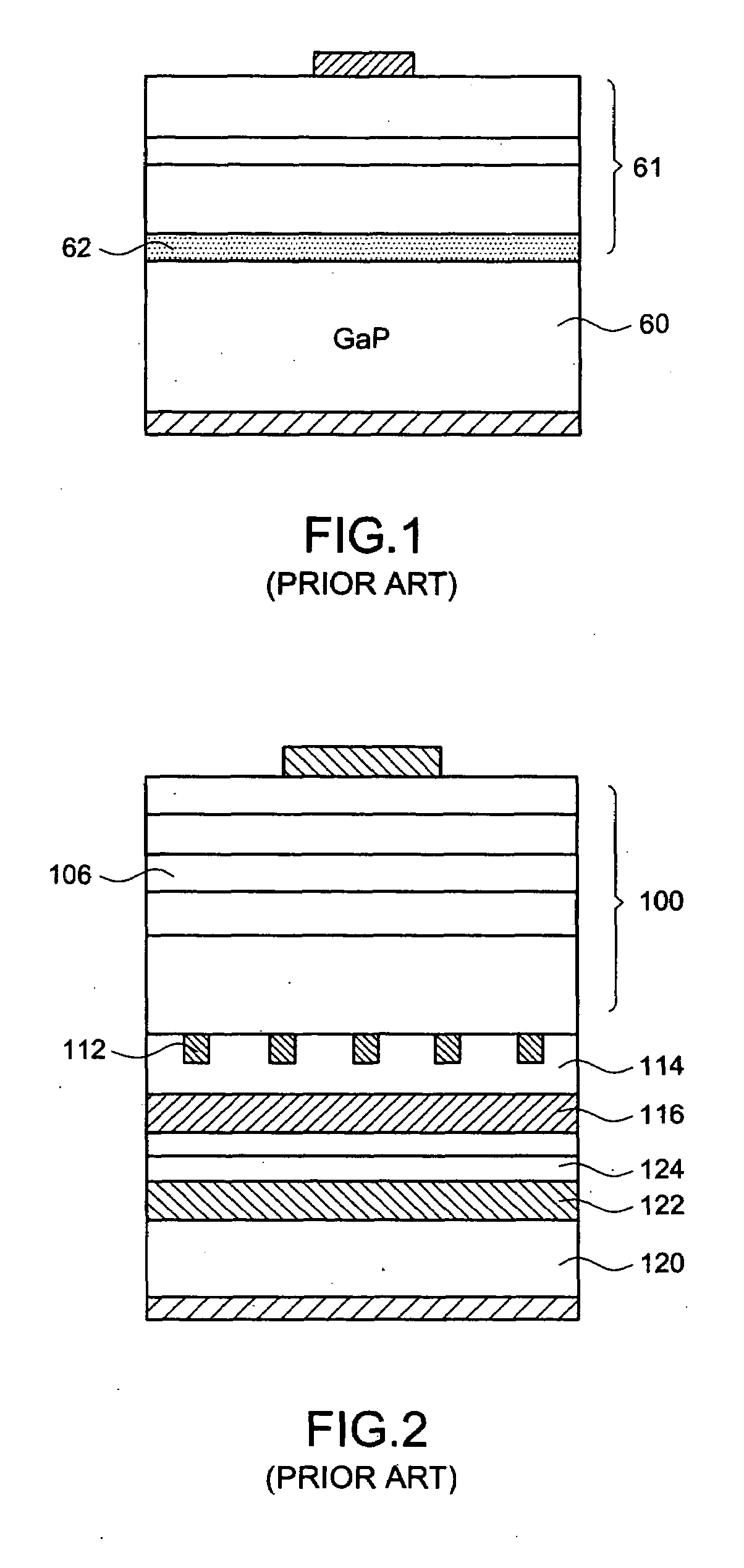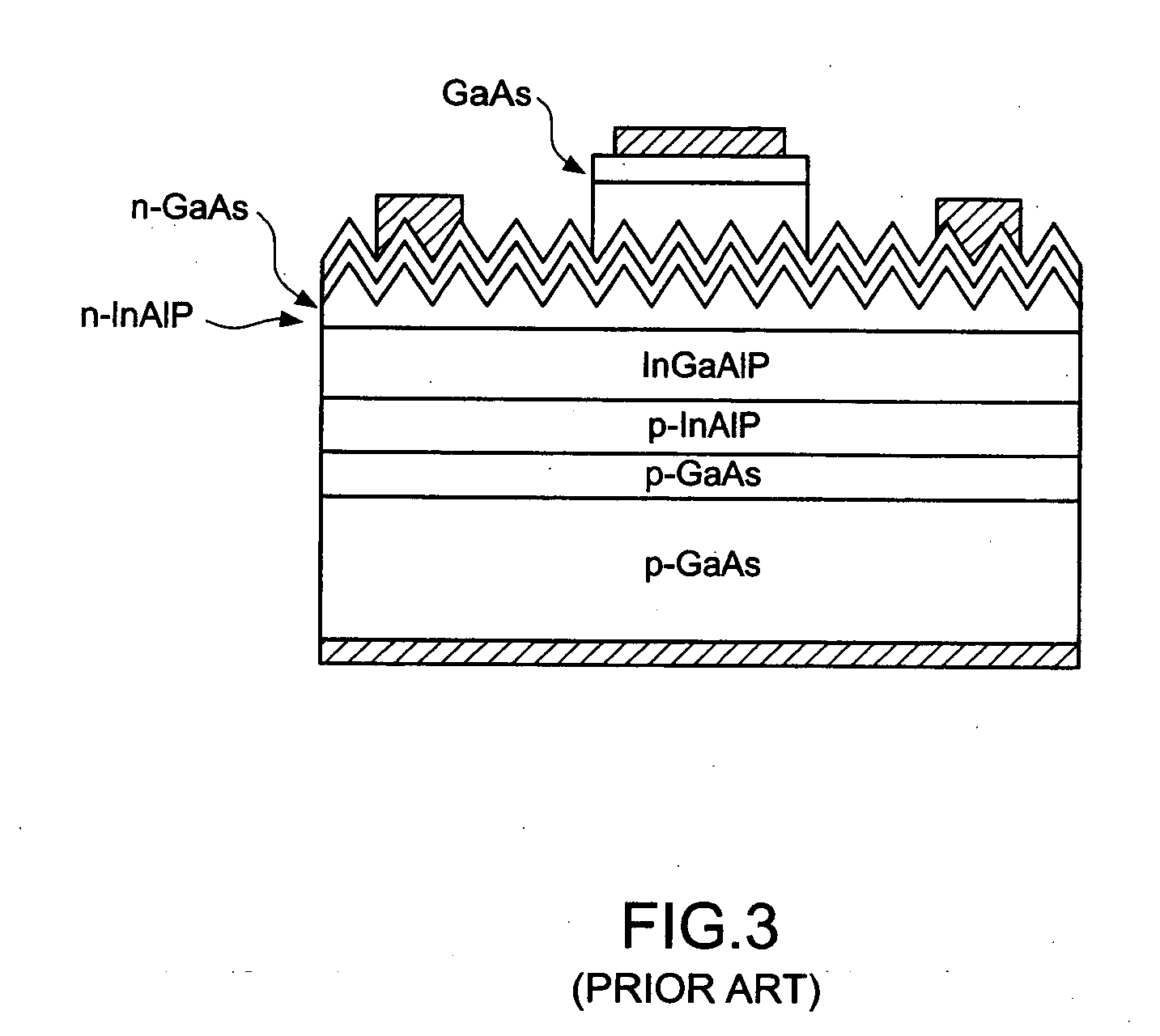Light emitting diode by use of metal diffusion bonding technology and method of producing light emitting diode
a light-emitting diode and metal diffusion bonding technology, applied in the direction of semiconductor/solid-state device manufacturing, electrical equipment, semiconductor devices, etc., can solve the problems of difficult to maintain the integrity of the bonded wafer or achieve a high yield rate, high operating voltage of the led, etc., and achieve the effect of improving performan
- Summary
- Abstract
- Description
- Claims
- Application Information
AI Technical Summary
Benefits of technology
Problems solved by technology
Method used
Image
Examples
Embodiment Construction
[0034]The AlInGaP semiconductor LED is, in general, grown on the GaAs substrate. GaAs substrate is a light-absorbing substrate that will absorb most of the light emitted from the active layer toward the substrate. The present invention employs a wafer bonding method to replace GaAs substrate with a permanent thermal and electrical conductive substrate. With the disclosed chip structures, light from the active layer will be reflected instead of absorbed by substrate. As a mechanical support to the epi layers, the bonding quality plays a very important role to the production yield. As a result, the chosen bonding process dramatically affects the cost of production. The aforementioned “Fusion Bonding” provides an excellent strength for the bonding interface due to its high bonding temperature and high bonding pressure. However, it is rather difficult to obtain a stable forward voltage with the above-mentioned technology. It is possibly a potential barrier at the bonding interface will ...
PUM
 Login to View More
Login to View More Abstract
Description
Claims
Application Information
 Login to View More
Login to View More - R&D
- Intellectual Property
- Life Sciences
- Materials
- Tech Scout
- Unparalleled Data Quality
- Higher Quality Content
- 60% Fewer Hallucinations
Browse by: Latest US Patents, China's latest patents, Technical Efficacy Thesaurus, Application Domain, Technology Topic, Popular Technical Reports.
© 2025 PatSnap. All rights reserved.Legal|Privacy policy|Modern Slavery Act Transparency Statement|Sitemap|About US| Contact US: help@patsnap.com



